What is This Yu-Gi-Oh! Thing the Kids Go On About Anyway? – Part Two
Welcome back to the second, more in-depth part of my how-to guide to Yu-Gi-Oh!, in which I will explain the Extra Deck, Fusion Summoning mechanics and the Battle Phase, for if (hopefully when) you begin to actually experience the game for itself.
Oh yeah, and if you haven’t read the previous one, I’d really recommend you do, because otherwise, none of this may make any sense whatsoever unless you have prior knowledge of Yu-Gi-Oh!
So, the Extra Deck. A varied toolbox of (usually) easily accessible cards, which further your gamestate and provide a wide scope of access for the owner. This mechanic is an integral part of Yu-Gi-Oh!, having been a part of the game since its very beginnings back in 1999 for Japan and Asia (the OCG – Official Card Game), and 2002 for the US, Europe and the rest of the West (the TCG – Trading Card Game). However, I will be using the TCG timings and dates for the rest of this piece, as that’s probably the relevant version for most of the people reading this (That said, if anyone is reading this, and lives in an OCG territory, shout-outs to you I guess?).
Anyway, in the beginning, there were Fusions. And only Fusions. From 2002 to 2008, these weirdly purple cards were the only possible thing to use in your Extra Deck, or at the time, Fusion Deck, a far cry from the varied toolbox of today. At the start of the game, the meta was simply Set 4 Traps, Summon La Jinn pass. That proved to be really boring, though, so most people clamoured for a deeper game (or so I’m told, I wasn’t really, you know, alive at that point). This arrived with the introduction of a new Normal Spell in the seventh set, Metamorphosis. This card let people summon Fusion monsters in a much simpler way, rather than the standard way, which was considered too negative in terms of card advantage at that point, and, in many cases, is still today. Speaking of the Fusion Summoning mechanic, let’s delve into the typically worst Extra Deck mechanic, what it is, and why it’s considered to be so bad…

Fusion Summoning, especially at the time around its release in the first set of Yu-Gi-Oh!, Legend Of Blue-Eyes White Dragon (2002), was inherently a bad trade in card advantage. This is because, to Fusion Summon, you need the materials listed on the card, as well as Polymerization. Polymerization is a Normal Spell card (Fusion Summon 1 Fusion Monster from your Extra Deck, using monsters from your hand or field as Fusion Material). For those of you who don’t understand the gibberish that is Yu-Gi-Oh! card text, this basically says, “send monsters from your hand or field to the graveyard, whose names are on a fusion monster’s requirements, then summon that monster.” The reason that this is a typically bad mechanic, is that, to Summon 1 Fusion monster, you lose 3+ cards, the Polymerization and the 2+ monsters used to Summon it from your hand or field.
The aforementioned Metamorphosis was the herald of a very popular format, even amongst players today (I don’t really get the excitement about it, but still), along with the Quick-Play Spell Scapegoat (Special Summon 4 “Sheep Tokens” (Beast/EARTH/Level 1/ 0 ATK/0 DEF) in Defense Position. They cannot be Tributed for a Tribute Summon. You cannot Summon other monsters this turn, but you can Normal Set), that specific format being GOAT Format. This format lasted from June to September 2005, and was initially heavily focused around Scapegoat and Metamorphosis, seeing as you could activate Scapegoat during your opponent’s End Phase, then on your turn, use Metamorphosis to Summon Thousand-Eyes Restrict. (Level 1 / 0 ATK / 0/ DEF:"Relinquished" + "Thousand-Eyes Idol". Other monsters on the field cannot change their battle positions or attack. Once per turn: You can target 1 monster your opponent controls; equip that target to this card (max. 1). This card’s ATK/DEF become equal to that equipped monster’s. If this card would be destroyed by battle, destroy that equipped monster instead.) In simple terms, this card basically steals a monster, takes its ATK and DEF and then uses it as protection if it is destroyed.




Leave a comment